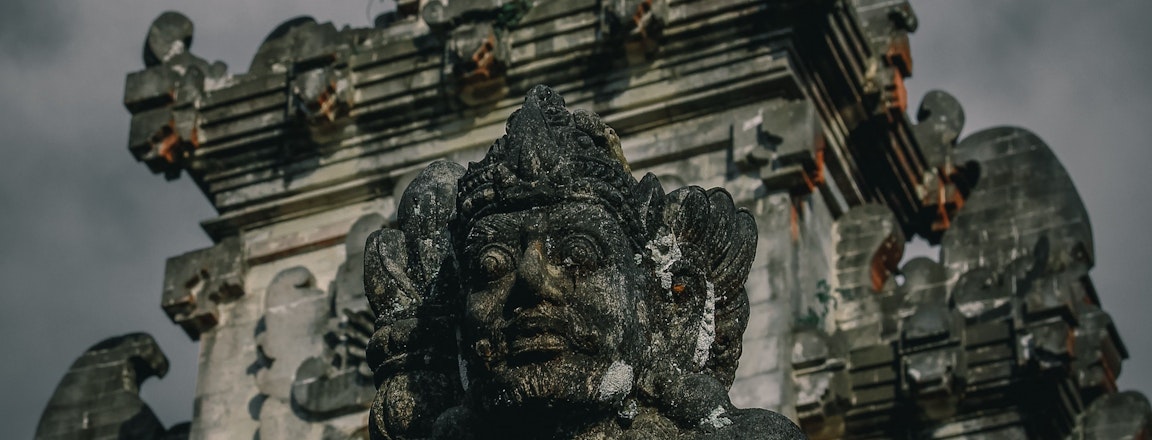Bali History: Unraveling the Mystique of Its Storied History

Bali is an Indonesian island that has been a popular tourist destination for decades. With its stunning beaches, lush forests, and unique culture, Bali has something to offer everyone. But behind its modern-day reputation lies a long and fascinating history that dates back thousands of years. From the arrival of the first humans on the island to the rise and fall of powerful empires, the history of Bali is a story of resilience, creativity, and adaptation. So, as you book your Bali holiday package, get to know the history of the land.
The Prehistoric Period of Bali
The prehistoric period of Bali is a fascinating era in Bali's history that dates back to around 3000 BC. During this time, Bali was inhabited by a variety of indigenous people who lived in small, scattered communities across the island. These people were skilled in agriculture, hunting, and fishing, and they lived in harmony with the natural environment.
One of the most notable aspects of the prehistoric period of Bali is the island's unique Megalithic culture. The Megalithic culture was characterized by the construction of large stone structures, such as burial complexes, shrines, and temples. These structures were built using massive stone blocks that were transported from quarries located miles away.
The prehistoric period of Bali also saw the emergence of early Hindu-Buddhist influences in the island's culture. This was evidenced by the discovery of numerous stone statues and stone inscriptions that depicted Hindu and Buddhist deities.
Overall, the prehistoric period of Bali was a time of great cultural development and innovation.
Hinduism Arrives on Bali's Shores
Between the 1st and 4th centuries CE, Hinduism spread to Bali, transforming its religious, artistic, and traditional landscape. It was introduced to the islanders by traders and Brahman priests, who introduced them to the Indian pantheon of gods and goddesses. Over time, Bali's indigenous animistic beliefs blended with Hinduism, creating Balinese Hinduism. Powerful Java-based kingdoms like Majapahit established courts, centres of learning, and patronised arts and architecture, developing Bali's unique artistic and cultural heritage. The arrival of Hinduism also influenced political and social organization, introducing the Balinese caste system and the concepts of monarchy and divine kingship. Today, Bali's Hindu heritage is evident in its temples, festivals, and rituals, which are integral parts of Balinese life.
Influence of the Majapahit Dynasty in Bali
The Majapahit Dynasty, based in eastern Java, arrived in the late 13th century and significantly influenced Balinese history. The kingdom consolidated parts of Bali, introducing Hindu traditions and customs, leading to the formation of Balinese Hinduism. The era also saw significant development in art, literature, and architecture, with courts and centres of learning patronizing the arts and sciences. The Balinese language, heavily influenced by Javanese, produced famous works like Babad Bali. The Majapahit Dynasty also influenced Balinese architecture, with temples featuring Javanese-style design elements. The kingdom's consolidation of Bali and the introduction of Hindu traditions contributed to the formation of Balinese Hinduism and the development of Bali's unique cultural heritage.
Collapse of Majapahit and the Emergence of Local Kingdoms in Bali
After the fall of the Majapahit Dynasty in Java, many people sought refuge in Bali, including aristocrats, scholars, artisans, and priests. This migration significantly impacted Balinese culture and led to the emergence of several independent kingdoms. The refugees brought knowledge, skills, and beliefs, enriching the existing Balinese culture. They contributed to the development of new artistic forms and spread Hindu-Buddhist traditions. The influx of migrants also led to the emergence of several independent kingdoms, often ruled by local leaders who gained power through military conquests or alliances. These kingdoms developed their own unique cultural identities, heavily influenced by the Majapahit refugees.
Colonization by European Powers in Bali
Bali gained European interest in the 16th century after Portuguese traders arrived, leading to Dutch expansion of influence. Bali's rich natural resources, such as spices and textiles, attracted European powers. The Dutch East India Company expanded control, but resistance from the Balinese people led to modern-day "Puputan" wars. Eventually, the Balinese fell under Dutch rule in the late 19th century, marked by economic exploitation and political oppression. Despite this, the spirit of resistance and independence remained strong, contributing to Bali's eventual independence in 1949. Today, Bali is a thriving part of Indonesia's economy and culture.
Balinese Republic and Independence
Bali briefly became part of the Republic of East Indonesia, which was backed by the Dutch in the aftermath of World War II. This era lasted from 1946 to 1949. However, it was short-lived, as the Republic of East Indonesia soon joined the newly formed Republic of Indonesia. Bali declared its independence from Dutch rule on August 17, 1945, along with the rest of Indonesia. This move was met with resistance from the Dutch, who were keen to retain control over their colonies. Nonetheless, Bali eventually became part of the Republic of Indonesia and gained recognition as an independent province in 1950. Today, Bali is a popular tourist destination and a vital part of Indonesia's economy and culture.
Post-Independence Era of Bali
The post-independence era in Indonesia was a time of great change and transformation. After gaining independence from Dutch colonial rule in 1949, the country underwent a period of rapid development and modernization. Bali, one of Indonesia's most famous islands, played a significant role in this process.
Bali's journey since Indonesian independence has been marked by several key events. Perhaps the most significant of these was the transformation of the island into a tourist paradise in the 1960s. This led to an influx of visitors from around the world, boosting both the local and national economies. Bali's unique culture and traditions also became more widely known and appreciated, further contributing to its appeal as a global destination.
Today, Bali remains a renowned global destination, attracting millions of visitors annually. However, it has managed to preserve its own culture and traditions, even as it has modernized and developed. This is a testament to the resilience and adaptability of the Balinese people and their commitment to maintaining the island's unique character and identity. As Bali continues to evolve and grow in the years ahead, it is sure to remain a beloved destination for travelers from around the world.
Explore Other Articles on Bali
Check out our Top Selling Packages in Bali
Bali Tour Package For Couple | Bali Family Package From India
Other Helpful Articles Relating to Bali Travel
Update your location?



